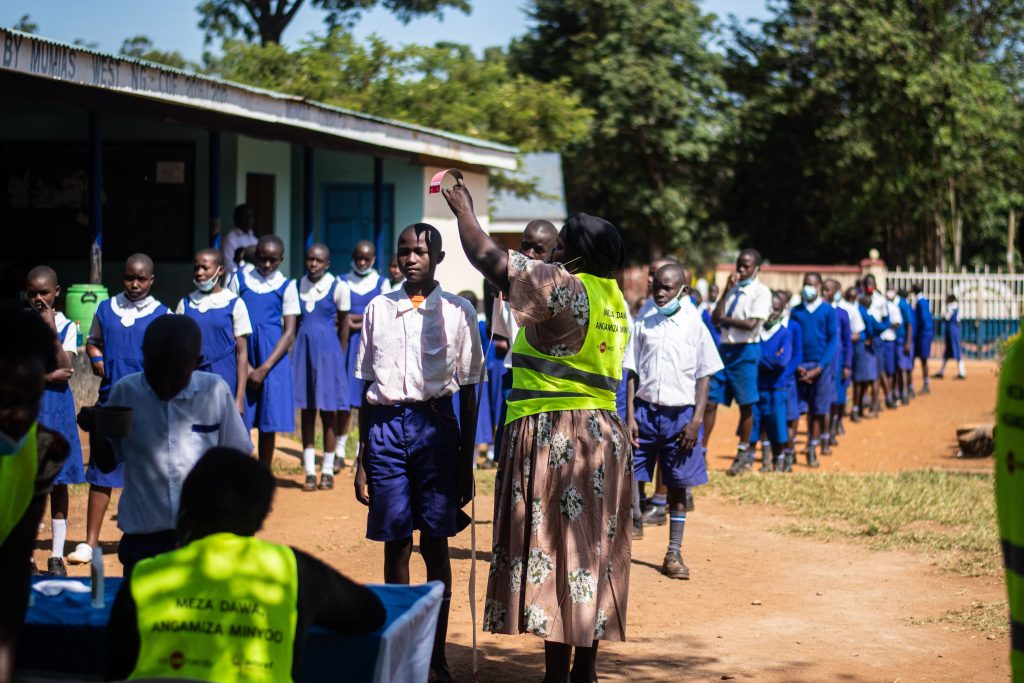Over the last decade, funders have embraced a wide range of approaches to maximize the impact of their resources. How can these strategies be applied to eliminating neglected tropical diseases?

Photo credit: the END Fund
Collaborative philanthropy – bringing together investors and grantees to work together toward solutions to social, economic, or environmental causes – has become increasingly common as a strategy to pool the resources of individual donors and foundations to apply to large-scale challenges, particularly in global health and international development. Beyond financing, collaborative philanthropy derives value from the blended knowledge, networks and influence from a range of actors to drive impact greater than the sum of the parts. The impact of collaborative philanthropy can be catalytic; for donors, collaborative giving can provide access to a wide network of experienced peers, decrease risk of individual investments and provide an established structure around decision-making with a strategy that aligns with personal values.
NTDs have proven to be a ‘best buy’ in global health, and recent years have brought tremendous momentum behind NTD elimination. Continued investments in these efforts will be crucial to their long-term success.
One area where collaborative philanthropy is making a significant and measurable impact is in the control and, ultimately, elimination of neglected tropical diseases (NTD), a group of 20 diseases prevalent primarily in tropical areas[1]. These diseases have devastating health, social, and economic consequences for people in endemic regions;1 yet, other diseases considered to be more urgent public health issues, like HIV/AIDS and Ebola, have drawn greater attention, funding, and political will. While NTDs are not usually fatal, they cause lifelong pain and disability, including blindness and inability to walk, in addition to more dire social implications such as isolation, stigmatization and loss of workforce capabilities and school attendance. Affecting 1.7 billion people around the world, the scale and nature of NTDs require collaborative solutions[2]. The good news is that NTDs are easily and inexpensively treatable; what we require are financial resources and political will to reach the finish line.
The END Fund is the only independent philanthropic financing vehicle that pools and mobilizes resources from a broad range of investors and directs it into efforts to address NTDs, focusing on the five most prominent: intestinal worms, lymphatic filariasis, trachoma, river blindness and schistosomiasis. Over the last decade, the END Fund has built a network of investors, including philanthropists, foundations, and corporate partners, all aligned under the shared goal of bringing an end to the burden of NTDs. Given the scale and nature of NTDs, as well as the myriad challenges inherent to control across a wide range of diseases and geographical areas, these efforts increasingly demand involvement from a diverse array of committed collaborators.

Photo credit: the END Fund
However, there is palpable energy from the NTD community approaching the high-level NTD Summit in Kigali in June: the Rwandan Government will host the public launch of the Kigali Declaration, a successor to the London Declaration of 2012, and Heads of State will gather in Kigali at the Commonwealth Heads of Government Meeting to renew and strengthen commitments to ending NTDs. In this timely and pivotal moment, the END Fund is working to crowd in funding and ensure capital is being leveraged at maximum efficiency. To combat the multi-pronged barriers to elimination, we are taking a systems approach to partnerships, engaging, and activating country-level stakeholders, including Ministries of Health, local governments, and community-based leaders to most effectively put this private capital to work. Collaboration is a requisite, however, to bridge resources and transcend the barriers that have allowed NTDs to persist.
NTDs have proven to be a ‘best buy’ in global health, and recent years have brought tremendous momentum behind NTD elimination. Continued investments in these efforts will be crucial to their long-term success. To date, 43 countries have eliminated at least one NTD, and 600 million fewer people now require treatment. This has been possible primarily through the power of dedicated, collaborative investment – an investment in the socio-economic potential of communities around the world and, ultimately, an investment in our collective futures. Given the progress we’ve made, the possibility of ending NTDs is not only in sight, but it is possible within our lifetime.
Allison Morris is the Vice President of Investor Relations at the END Fund.





Comments (0)